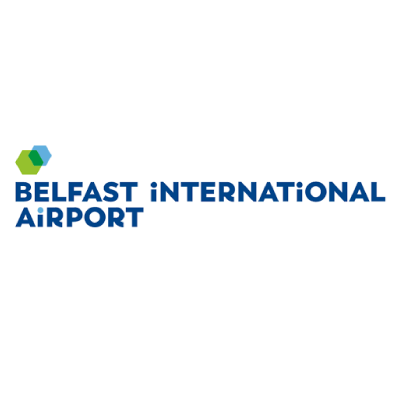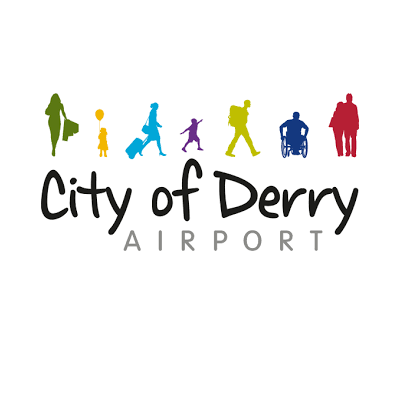Digital transformations enable airports to revolutionise their operations with automated processes and tools. However, as with any change, airports will face challenges throughout the digital transformation process, ranging from people-centric issues to financial limitations and everything in between. Here we seek to identify and examine some of the key digital transformation challenges airports face and how to solve them with actionable tips.
Resistance to change and adopting the right mindset
When it comes to a successful digital transformation, you could argue that problems lie more with the people than with the technology itself. You see, a digital transformation is not only adopting new software and processes but entirely new, innovative ways of working that your airport teams must get to grips with.
But that is often easier said than done. According to statistics from McKinsey, 70% of all digital transformation programs fail due to employee resistance and lack of support from management. With this in mind, it is essential to ensure your airport organisation has the right mindset for adopting a digital transformation. Everyone from leadership to new employees must be on the same page and open to trying new things.
As Mark Schwarz, Head of Digitalisation and Business Excellence at Zurich Airport, said at the IAR Online Summit 2022, “if you want to accelerate digitalisation, you really have to ask how can we do it in a better and smarter way, and differently to the last 5 or 10 years.”
Involving every member of your organisation from the outset and allowing them to voice their concerns and ideas is essential. Hiring open-minded, forward-thinkers is a must, as is working with an experienced, innovative tech partner to drive acceleration and provide the support your airport teams require.
Choosing which digital airport projects to prioritise
Innovation is exciting, and it’s so easy to get carried away and overwhelmed by its prospect. Hence, there needs to be a solid foundation for your digital transformation and a starting point.
Decide on which digital transformation project is most vital in moving your airport forward. For example, at Phoenix Sky Harbor International Airport, they decided to focus on customer experience first.
“We’re prioritising digital initiatives where we can impact passenger experience or create operational efficiencies. The reason we went in this direction is that with the return of passengers, we were suddenly faced with the pre-pandemic issues of capacity and congestion. Therefore, we made a conscious decision that when we’re looking at digitalisation, we need to look at initiatives and projects that will help us optimise and maximise the existing capacity we have,” said Deputy Aviation Director, Daver Malik at the IAR Online Summit.
Whichever projects your airport prioritises, remember that you can deliver digital transformations in stages. Testing smaller areas, phasing in technology and analysing results is crucial to the success of your digital transformation strategy and something we can support your airport with at Rezcomm.
Stakeholder buy-in for digital transformations
“It’s one thing to prioritise the right projects and have the right digital strategy, but at the end of the day, you also need money to be able to invest and the right organisation to support the whole digital strategy and acceleration,” explained Mark Schwarz at the IAR Online Summit.
And he’s right. A digital transformation at your airport cannot happen without stakeholder buy-in. It’s something we’ve discussed in greater detail in our blog post, ‘how airport innovation teams can secure stakeholder buy-in and funding for digital projects.’ But essentially, to address the problems surrounding stakeholder buy-in for digitisation initiatives, it’s about showing the benefits to all parties involved.
As Federico Cabrera, Airport Operations and Customer Experience Manager at Carrasco International Airport, explains, “airports are complex and big ecosystems, so it’s not only the airport and management body you need to convince, but also the stakeholders. We use a strategy called the three A’s – airports, airlines and agencies. So we need to convince all of these stakeholders.”
For instance, while an airport’s main benefit from a digital initiative might be an increase in non-aeronautical revenue due to improved passenger experience, you also need to consider how airline and agency partners might benefit. Will the airline benefit from shorter check-in times? A faster boarding process? Reduced turnover times? Make sure they know about it. Will the agency see an increase in security levels and border protection from the digital technology you’re implementing? Point this out to them.
“Once you show the benefits, it’s easier to get buy-in from all parties,” says Federico Cabrera.
Managing risk at your airport
With any business change comes risk, but “the greatest risk is to not take any risks” says Mark Schwarz. Of course, introducing digital technologies to your airport is a significant investment, but ultimately, it costs more to live within your legacy systems.
The key is to phase in your digital transformation strategy to prove you are on the right track and continue to see investment. Understandably, airports are not keen to invest upfront if they don’t know the outcome. Hence the importance of working with an experienced and reputable airport technology partner.
“We need to move forward with partners who are open to risk-sharing, in terms of saying let’s set up a proof of concept. Let’s have a trial and see if it works or not. That’s the way to go.” Mark continued.
And that’s something we wholeheartedly agree with at Rezcomm. We are all about helping our clients manage risk with live demos, strategy information, project management and ongoing support and training.
What’s more, we encourage our airport partners to progress at their own pace by plugging in our modules as and when they need to and only ever paying for the technology they are using.
Airport Data Collection
Collecting data is a crucial part of an airport’s digital transformation strategy. It informs decision-making and goes a long way in proving a digital technology generates the right results. First, however, airports must consider the impact of data collection on passengers.
“If we want to have information from our passengers, we need to provide the right type of value” said Mark Schwarz at the IAR Online Summit. If you don’t provide a reason for passengers to hand over their details, you won’t get it. It’s, therefore, essential that your airport knows what it is doing with the data, and you can make it clear to the passenger. You need to provide something for that information to kick off your passenger’s communication journey (or loyalty loop, as we like to call it).
It’s also worth considering alternative ways of collecting data to inform your digital transformation strategies – for instance, artificial intelligence. At the International Airport Review Summit, Daver Malik (Phoenix Sky Harbor) explained that the airport looks to mine valuable data from other sources…
“I think a key part of digitalisation is forcing us to look at different ways of solving that same problem. So, for example, at Phoenix, we’re looking at how we can use AI and commercially available data, working with partners, so we can get that understanding about our passengers without necessarily asking and looking for that piece of info from them.”
Reaching passengers
While we’re on the topic of passengers, it’s worth considering how an airport’s digital transformation affects them. Of course, airport digitisation initiatives are often accelerated with the passenger experience in mind; however, new digital technologies must adapt to the passengers’ needs for it to have a positive effect. After all, there is no point in investing in new technology if passengers can’t use it properly.
A great example of this is the AR-enabled navigation technology used at Zurich Airport. They recognised that not everyone speaks English or one of the few languages available on airport signage. Hence, they needed to ensure that information was available in a simple way, in the language they speak.
“We joined into a partnership with Google to create the first AR-enabled airport using the Google Indoor Live View. That had one major benefit. First of all, it’s the easiest way to navigate. You can just type in the shop or POI on Google Maps. Then, when you tilt your phone, you see the real world around you with superimposed information on top, showing you exactly where to go on a rich level in the language the person is speaking. The key is to get as much of the services as possible on the device the user has so they can search and navigate the information in the language they speak.”
Phoenix Sky Harbor International Airport has adopted a similar customer-centric approach to digitalisation, with an interactive map the airport uses to deliver essential information to customers in real-time. Daver explained, “We wanted the power to be in the hands of the passengers on their devices they are used to using and provide it in a way that is acceptable to them, easy to navigate and based on or an extension of the current common behaviour of our customers. Not just inside the airport but what they experience outside the airport on a day to day basis.”
While engaging customers with your digital strategy can be challenging, the key is to take a customer-centric approach. Ensure your airport focuses on the tools and devices your passengers understand and feel comfortable using to achieve high adoption and success rates.
Overcome airport digital transformation challenges with Rezcomm
No challenge is too big for our team of airport technology experts. Download our brochure to learn about our airport solutions, and get in touch to discuss how we can help you deliver your digital transformation strategy.






























